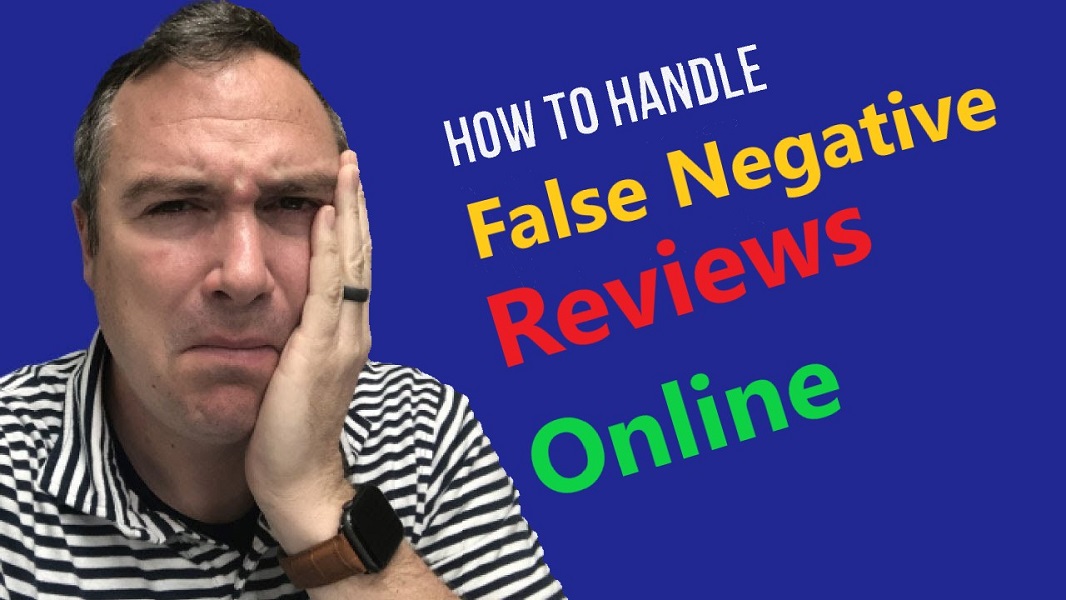How to Handle False Negative Reviews Online

Negative reviews can be challenging, especially when they are false. They can damage your business’s reputation and deter potential customers. Knowing how to handle false negative reviews effectively is crucial. This guide will help you navigate the steps to address and mitigate the impact of false reviews.
Understanding the Impact of False Negative Reviews
False negative reviews can harm your business in several ways. They can lower your overall rating, discourage new customers, and tarnish your reputation. A study by BrightLocal found that 82% of consumers read online reviews for local businesses, highlighting the significant impact reviews can have on your business.
Identifying False Reviews
Look for Red Flags
False reviews often have certain red flags. Look for reviews that are overly vague, contain irrelevant details, or use overly negative language without specific examples. These can be indicators that the review is not genuine.
Verify the Reviewer
Check if the reviewer has a history of leaving similar reviews for other businesses. If the account appears to be a “troll” account, created solely to leave negative feedback, it may be a false review.
Cross-Check with Customer Records
If possible, cross-check the review with your customer records. If the review does not match any of your transactions or customer interactions, it may be false.
Responding to False Reviews
Stay Calm and Professional
When responding to a false review, it is important to stay calm and professional. Avoid responding with anger or defensiveness, as this can escalate the situation and further damage your reputation.
Address the Review Publicly
Respond to the review publicly, if the platform allows it. Acknowledge the feedback and express your commitment to customer satisfaction. Politely state that you cannot find any record of the transaction or interaction mentioned in the review.
Invite Offline Discussion
Encourage the reviewer to contact you directly to resolve the issue. Provide contact information and offer to discuss their concerns offline. This shows potential customers that you are proactive and willing to address complaints.
Requesting Review Removal
Contact the Review Platform
If the review violates the platform’s guidelines, you can request its removal. Each platform has its own process for handling false reviews. For instance, Google, Yelp, and Facebook all have reporting mechanisms in place. To learn how to remove a review, visit the platform’s help center and follow their specific instructions.
Provide Evidence
When requesting removal, provide any evidence that supports your claim that the review is false. This could include customer records, screenshots, or other relevant documentation.
Follow Up
If your initial request is denied, follow up with the platform. Be persistent and provide additional evidence if necessary. Some platforms may take time to respond, so patience is key.
Preventing Future False Reviews
Monitor Reviews Regularly
Regularly monitoring your reviews can help you quickly identify and address false reviews. Set up alerts for new reviews so you can respond promptly.
Encourage Genuine Reviews
Encourage satisfied customers to leave positive reviews. This can help dilute the impact of any false negative reviews. Provide excellent service and ask customers to share their experiences online.
Educate Customers
Educate your customers about the importance of leaving honest reviews. Let them know that false reviews can harm businesses and that you value their genuine feedback.
Legal Considerations
Know Your Rights
Understand your legal rights when it comes to false reviews. Defamation laws vary by jurisdiction, but false statements that harm your business can often be challenged legally.
Consult a Lawyer
If false reviews are significantly impacting your business, consult a lawyer. They can help you understand your options and potentially take legal action against the reviewer. A lawyer can also help draft a cease and desist letter if necessary.
Building a Positive Online Reputation
Engage with Customers
Engage with your customers online by responding to reviews, both positive and negative. Show that you value their feedback and are committed to improving their experience.
Share Positive Reviews
Share positive reviews on your website and social media channels. This can help boost your reputation and counteract the impact of false negative reviews.
Improve Your Services
Use feedback from genuine reviews to improve your services. Show your customers that you are listening and taking their suggestions seriously. This can lead to better reviews in the future.
Supporting Your Team
Train Your Staff
Train your staff on how to handle customer complaints and reviews. Ensure they know how to respond professionally and courteously to all feedback.
Provide Support
Provide support to your staff in dealing with negative reviews. Encourage them to report any suspicious activity and work together to address false reviews.
Celebrate Successes
Celebrate positive reviews and successes with your team. Recognize their hard work and dedication to providing excellent customer service.
Conclusion
Handling false negative reviews requires a proactive and strategic approach. By identifying false reviews, responding professionally, and requesting removal, you can mitigate their impact. Preventing future false reviews through regular monitoring, encouraging genuine feedback, and educating customers is also essential. Understanding your legal rights and building a positive online reputation are crucial steps. With persistence and the right strategies, you can protect your business from the harm caused by false negative reviews and maintain a strong, positive online presence.






